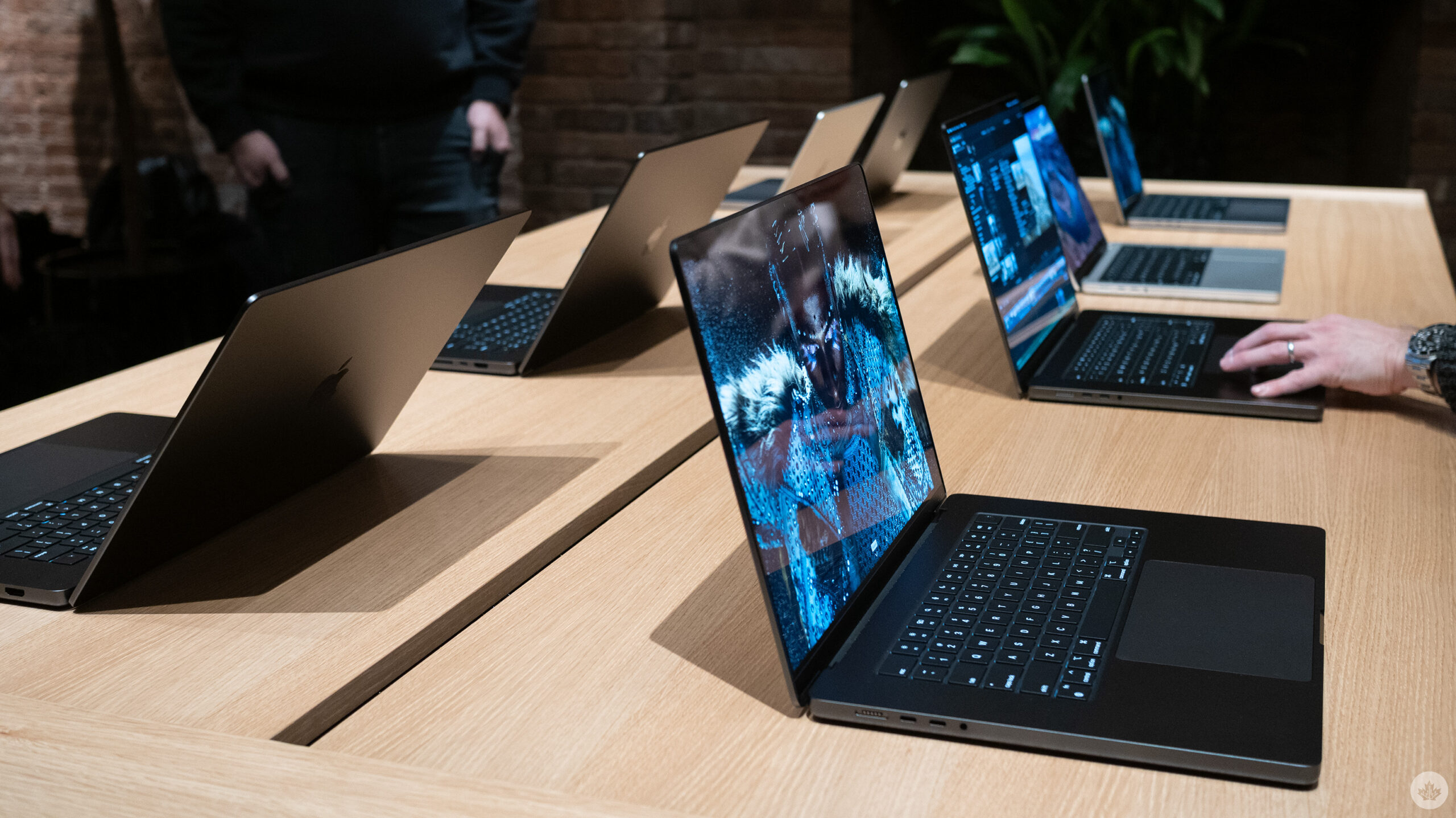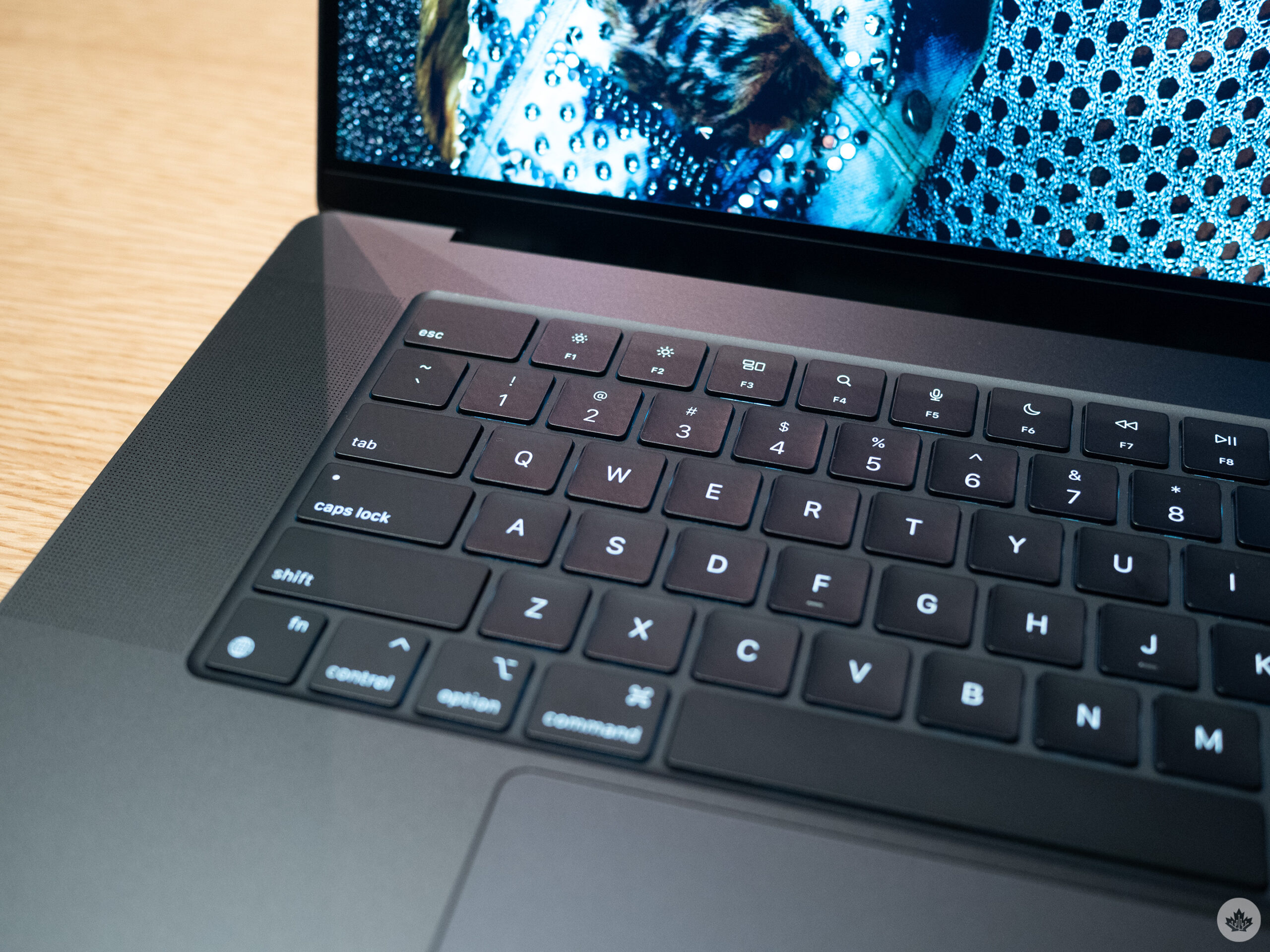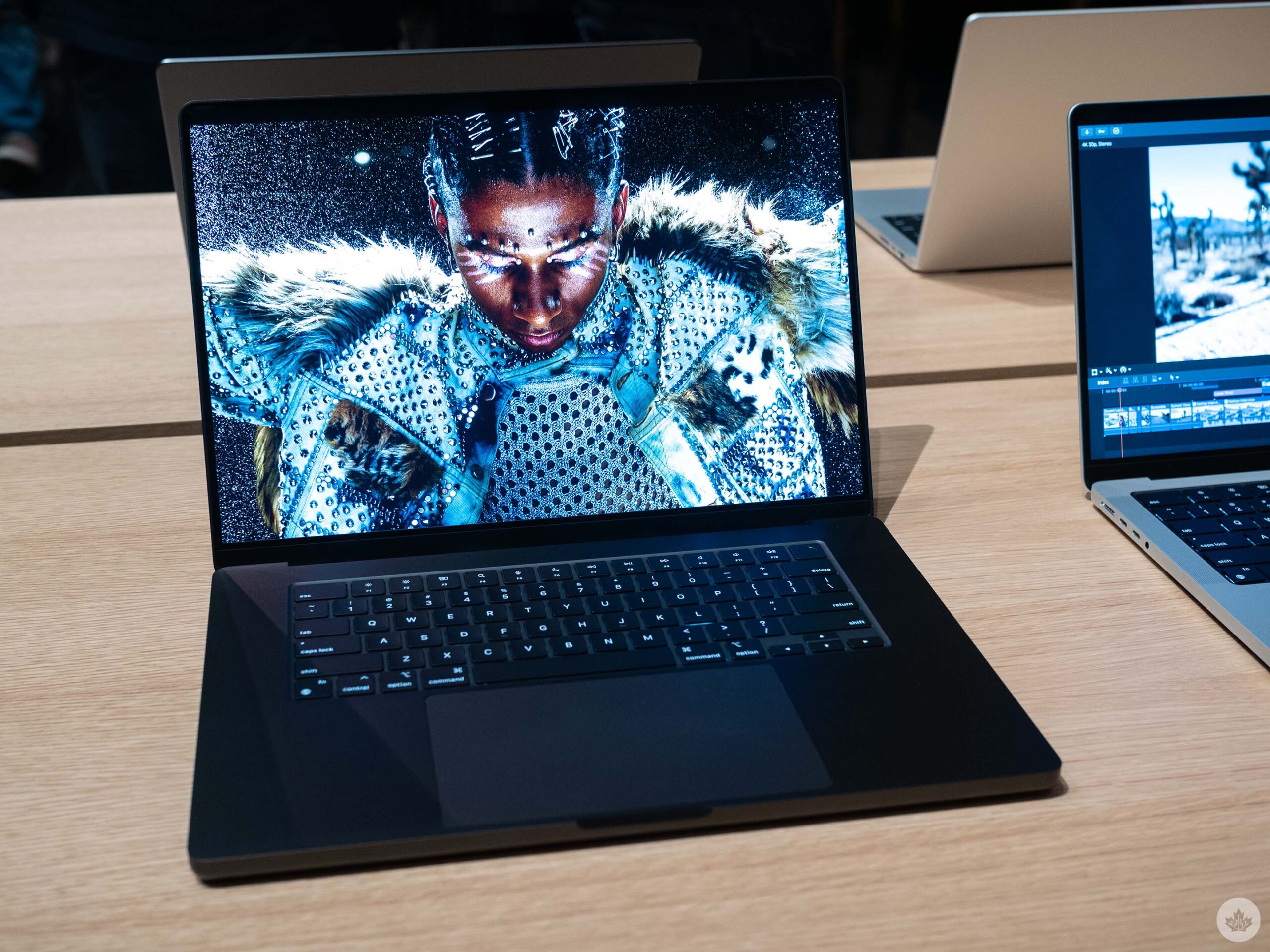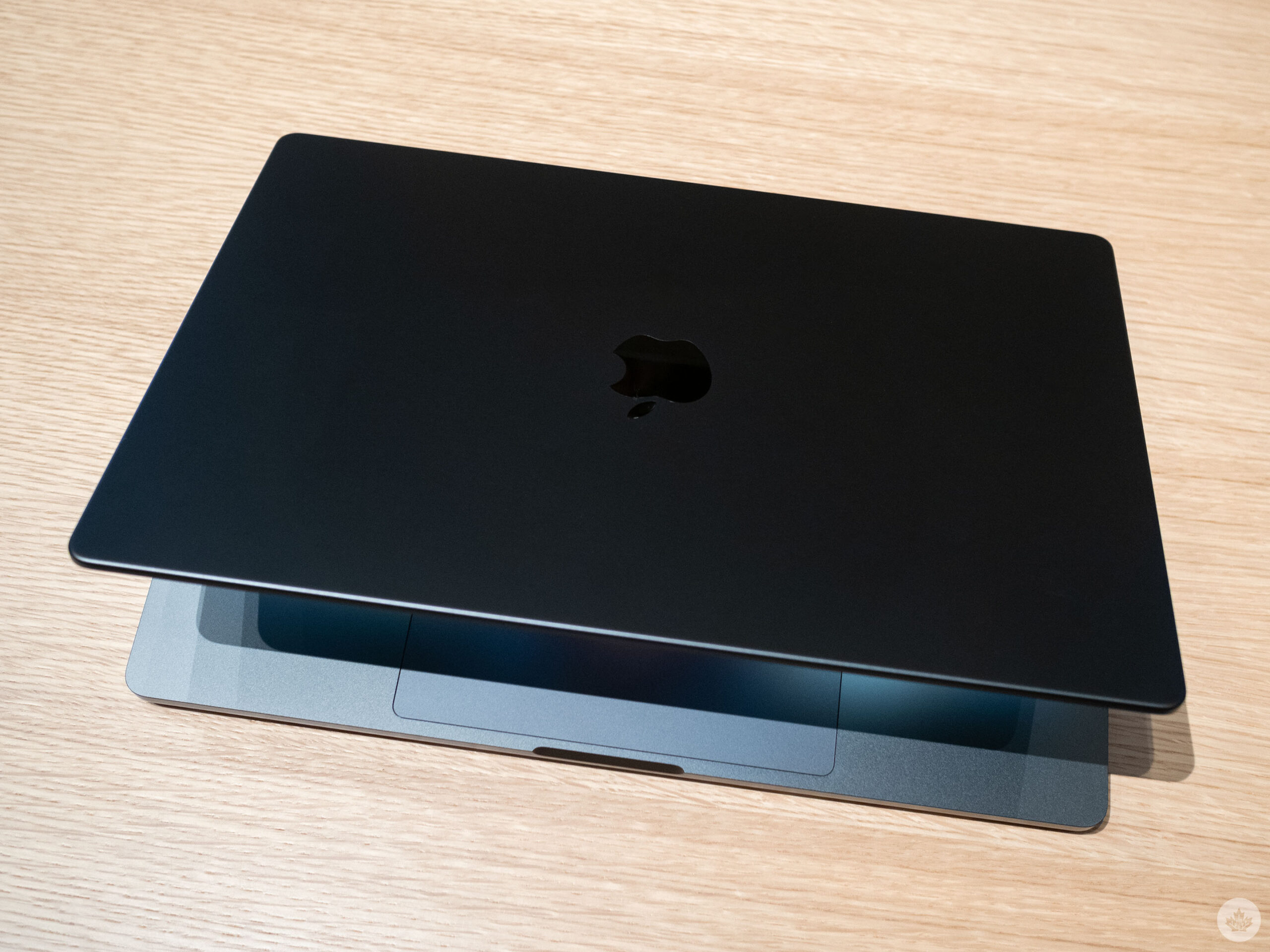
Roughly nine months after the last chip refresh, Apple is upgrading the processor in the 14-inch/16-inch MacBook Pro with its cutting-edge M3 chip design, a lower starting price and a new black finger-print resistant colour option.
Nearly everything else about the MacBook Pro remains identical to the previous models, except the Liquid Retina XDR display which features 20 percent brighter SDR content at 600 nits. This should make day-to-day usage a little brighter, but the overall output of the screen will be similar to the excellent previous version.
The main draw for some will likely be the great-looking new colour, ‘Space Black.’ It’s the first black shade since the original black polycarbonate MacBook in 2006 and a handsome look for the modern MacBook Pro.
The darker shade looks sleek and, thankfully, features a special chemical process that keeps it smudge and grease-free. I’m hoping this technology makes its way to Apple’s other products since it looks nice and appears to be very functional. Seriously, I have very greasy fingers and spent several minutes in the hands-on area trying to smudge the ‘Space Black’ colour — I couldn’t. The ‘Midnight’ MacBook Air is also a darker colour and suffers from ample smudges, so it’s great to see Apple course correct here. It’s unclear if the new Space Black colour will avoid the paint-chipping problems the Midnight MacBook Air suffers from.
Beyond the above, things start to get a little more complicated. The new MacBook Pro is available in three different power variants depending on the M3 chip version you select. This means you end up with three very differently priced laptops with different target audiences.
Below is the lineup:
- Base model: M3 — $2,099
- Mid-tier: M3 Pro — $2,599
- High-end: M3 Max — $4,349
The base-level M3 chip includes an 8-core CPU/10-core GPU (up to 24GB of RAM), the M3 Pro features a 12-core CPU/18-core GPU (up to 36GB of RAM), and the M3 Max offers a 14-core CPU/30-core GPU (up to 36GB of RAM) with the 14-inch MacBook Pro and a 14-core/30-core GPU or a 16-core CPU/40-core GPU (up to 128GB of RAM) with the 16-inch MacBook Pro.
The base-level M3 replaces the old M1 MacBook Pro and has moderate GPU power. The M3 Pro sits in the middle ground with an average GPU. The M3 Max pushes things much further with massive GPU power for tasks like 3D rendering and animation.
Apple claims the 14-inch M3 MacBook Pro is 60 percent faster than the 13-inch M1 MacBook Pro. This is a welcome upgrade for anyone holding out for a refresh, but like the old 13-inch MacBook Pro, the base-model 14-inch only features two USB-C ports compared to the M3 Pro/M3 Max’s three. It still includes an HDMI port, an SD card slot and MagSafe charging, but it’s lost a single USB-C port.
 On the M3 Pro side, Apple claims the chip is 40 percent faster than the 16-inch MacBook Pro with an M1 Pro chip. Regarding the M3 Max, Apple says the chip is 2.5 times faster than the 16-inch MacBook Pro with an M1 Max chip and up to 11 times faster than the “fastest Intel-based MacBook Pro model.” The M3 Max also offers up to 128GB of RAM.
On the M3 Pro side, Apple claims the chip is 40 percent faster than the 16-inch MacBook Pro with an M1 Pro chip. Regarding the M3 Max, Apple says the chip is 2.5 times faster than the 16-inch MacBook Pro with an M1 Max chip and up to 11 times faster than the “fastest Intel-based MacBook Pro model.” The M3 Max also offers up to 128GB of RAM.
It’s worth noting that Apple is not directly comparing its new M3 series of chips to its more recently released M2 line and instead opting to focus on the 2021-released M1 is very intentional. It’s more than likely the power gains won’t yield as impressive results compared to the M2 series, particularly against the M2 Pro and M2 Max. I’ll put Apple’s new M3 series chips through their paces when I get my hands on review devices.

For most, the MacBook Air is the perfect default entry-level laptop and the MacBook Pro line is a step above that in power and port selection. Apple’s laptop lineup is likely to get more complicated once the inevitable M3 MacBook Air is revealed. For now, the key choice is choosing a MacBook Air or MacBook Pro. If you opt for the Pro you’ll need to decide what chip you need, but at least there’s only one ‘Pro’ form factor this year.
Apple says that its M3 family of chips are constructed with 3-nanometer technology and describes the silicon as offering the “biggest leap forward in graphics architecture” the tech giant has ever offered with its own chips. I haven’t tested these claims yet, but as soon as I get my hands on review devices, I’ll put them through their paces.
 The 14-inch and 16-inch MacBook Pro are available to order now and release on November 7th. The 14-inch MacBook Pro with M3 starts at $2,099 (a substantial price increase over the discontinued $1,699 13-inch MacBook Pro, but well under the $2,599 14-inch MacBook Pro M2 Pro starting price). The 14‑inch/16-inch MacBook Pro with M3 Pro starts at $2,699 and $3,299, respectively. The M3 Max version of the 14-inch/16-inch MacBook Pro will ship later in November and starts at $4,349 and $4,649, respectively.
The 14-inch and 16-inch MacBook Pro are available to order now and release on November 7th. The 14-inch MacBook Pro with M3 starts at $2,099 (a substantial price increase over the discontinued $1,699 13-inch MacBook Pro, but well under the $2,599 14-inch MacBook Pro M2 Pro starting price). The 14‑inch/16-inch MacBook Pro with M3 Pro starts at $2,699 and $3,299, respectively. The M3 Max version of the 14-inch/16-inch MacBook Pro will ship later in November and starts at $4,349 and $4,649, respectively.
For more on Apple’s ‘Scary Fast’ event, including our coverage of the refreshed M3-powered iMac, follow this link.
With files from Bradley Bennett.
MobileSyrup utilizes affiliate partnerships. These partnerships do not influence our editorial content, though we may earn a commission on purchases made via these links that help fund the journalism provided free on our website.
MobileSyrup may earn a commission from purchases made via our links, which helps fund the journalism we provide free on our website. These links do not influence our editorial content. Support us here.




